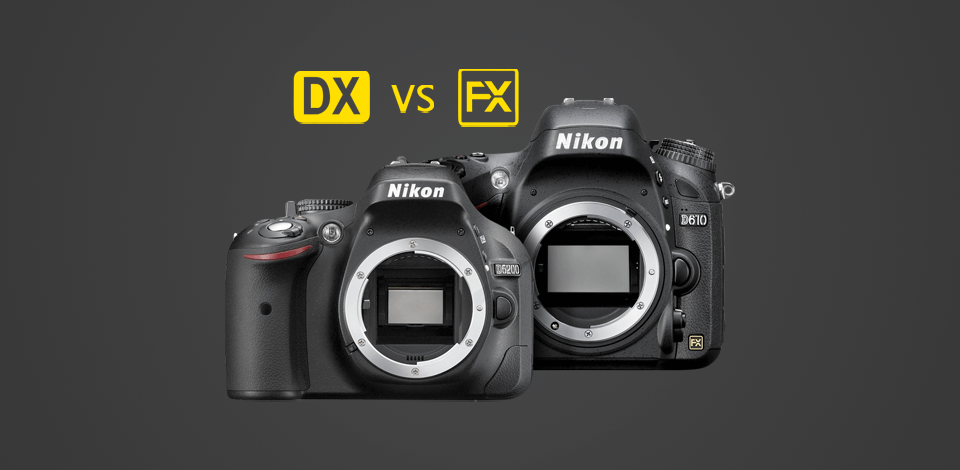
Comparing DX vs FX lens models by Nikon, we are actually talking about the size of a sensor. This parameter greatly affects the photo quality and the results you get in general. If you are going to expand your shooting toolkit, it is necessary to understand what lens will work best for a specific task. Below, you can find a detailed explanation.
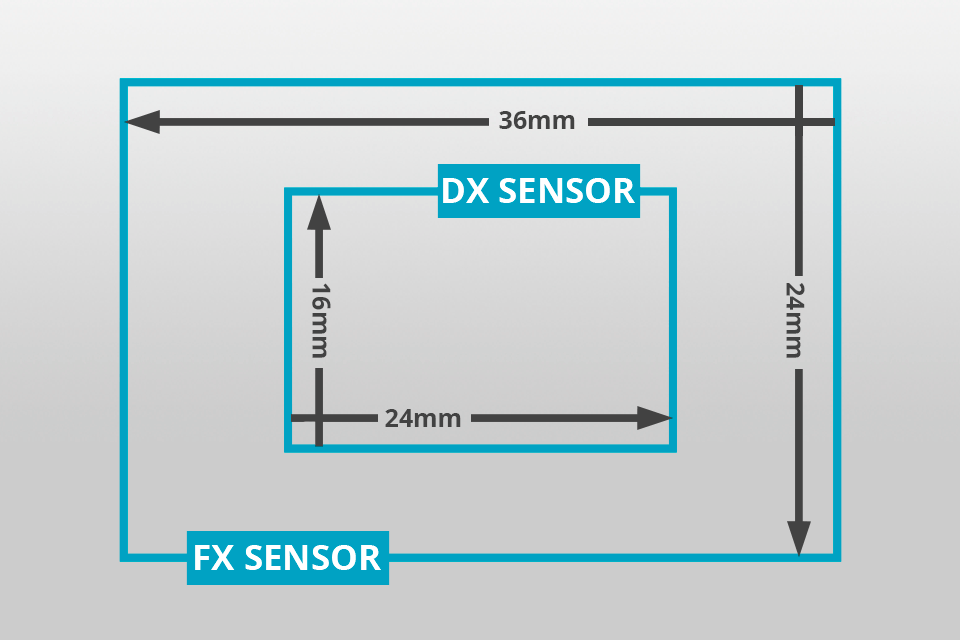
A camera sensor format or simply a camera format denotes the size and shape of a camera sensor, which, in turn, is responsible for capturing an image. In this regard, all DSLRs can be divided into 2 types – cameras with DX and those with FX.
A sensor is one of the core elements of a camera system. Sensors can have different sizes – from miniature (in smartphones) to larger (in big-format shooting devices). Everything a lens “sees” is immediately recorded on a sensor that consists of photosites. Next, the sensor sends data to an image processor, which combines the pixels into a photo. The bigger the sensor, the more light it captures, and the better image you get.
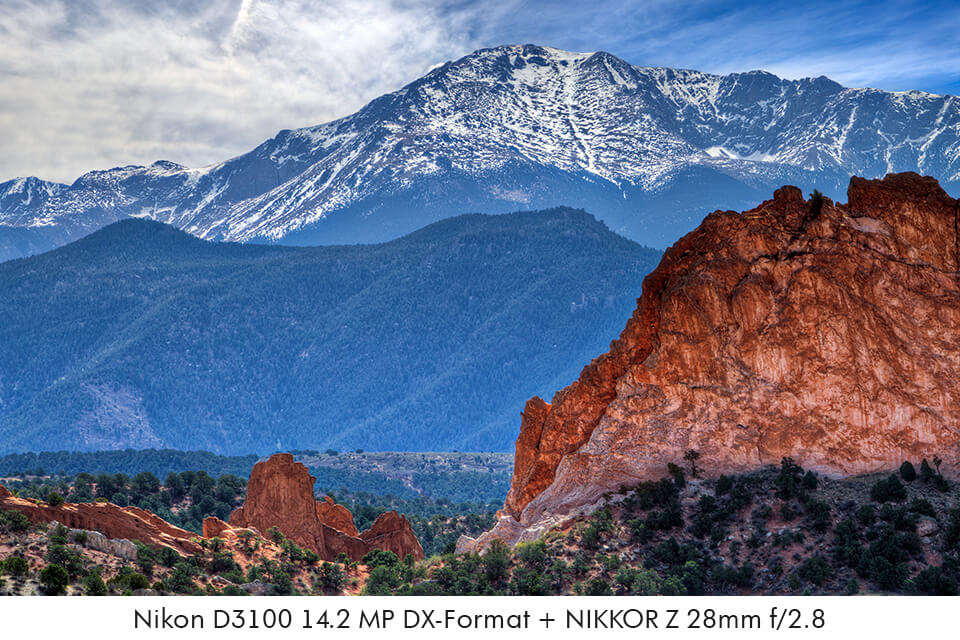
Nikon photography cameras with a DX sensor have dimensions of 24mm by 16mm, which means they are smaller than their counterparts with full-frame FX sensors by more than half.
Being relatively small, such sensors slightly magnify an image captured with a 1.5x crop factor. Thus, an object in focus is located closer to the center of the frame, while the corners are cut and there appears a tenuous vignetting around the edges.
There is also a gap between Nikon FX vs DX format cameras when it comes to the price with the latter being more affordable. Besides, DX models will totally satisfy travel photographers, who need powerful yet lightweight gear. In fact, such cameras can produce as detailed photos as a 36MP full-frame DSLR camera. Considering their corner-cutting characteristics, the developers of lenses created budget-friendly options with reasonable weight and sleek design.
The majority of pro-level lenses show fantastic results when paired with DX sensor cameras. Since most lenses are made to keep the center sharp instead of chasing extreme corners, they will perfectly complement the DX sensor. In other words, when a camera and a lens are designed with the same outcome in mind, such a duo can amaze the pickiest photographers.
Since DF bodies pay less attention to corners, vignetting is less defined than on FX analogs. However, there is a caveat to keep in mind while using wide angle lenses – they are not very wide on a DX camera due to the depth of field differences. For example, comparing a 14mm ultra-wide-angle lens to a full-frame one, we will see that it resembles a 21mm lens, so your frame will contain fewer details.
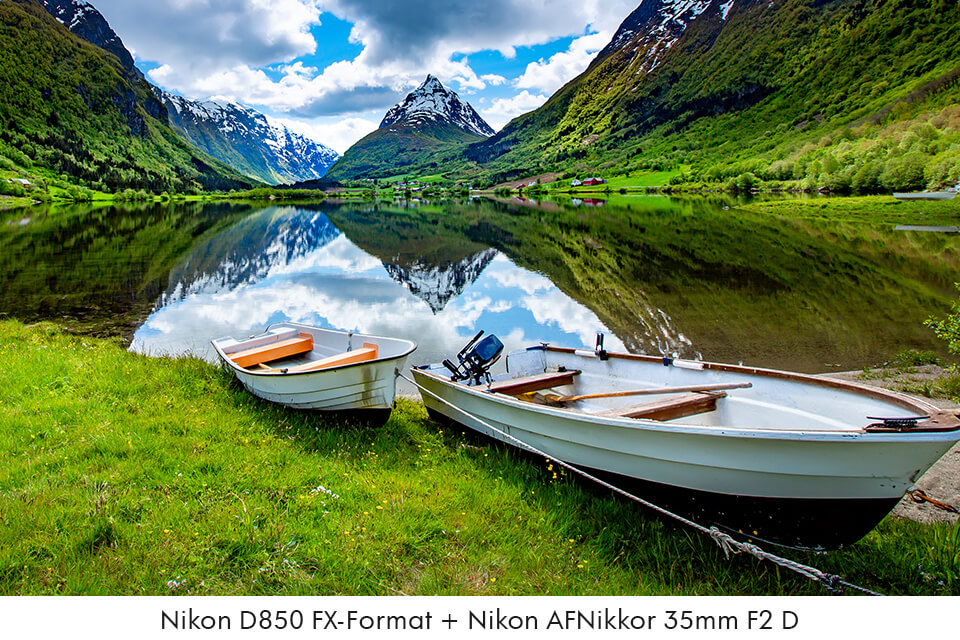
If you see “FX” in the specs of a Nikon camera, it means that this is a full frame camera. The best companion for such a device is an FX lens. A sensor in such cameras is 36mm by 24mm, which is a recognizable standard for full-frame sensors. FX sensors stand out with higher sensitivity and lower noise levels.
Comparing Canon vs Nikon products, I found out that it is impossible to attach a crop sensor lens to a full-frame Canon camera without causing harm to a device. Besides, using such a combo, you will end up with severe vignetting in photos. However, using a DX lens with an FX Nikon camera isn’t a problem.
A camera automatically applies a crop to match a lens. Doing so is a breeze considering that DX lenses have a smaller image circle. Therefore, a camera takes a smaller piece of a full-frame sensor and extracts a picture from that part of the sensor.
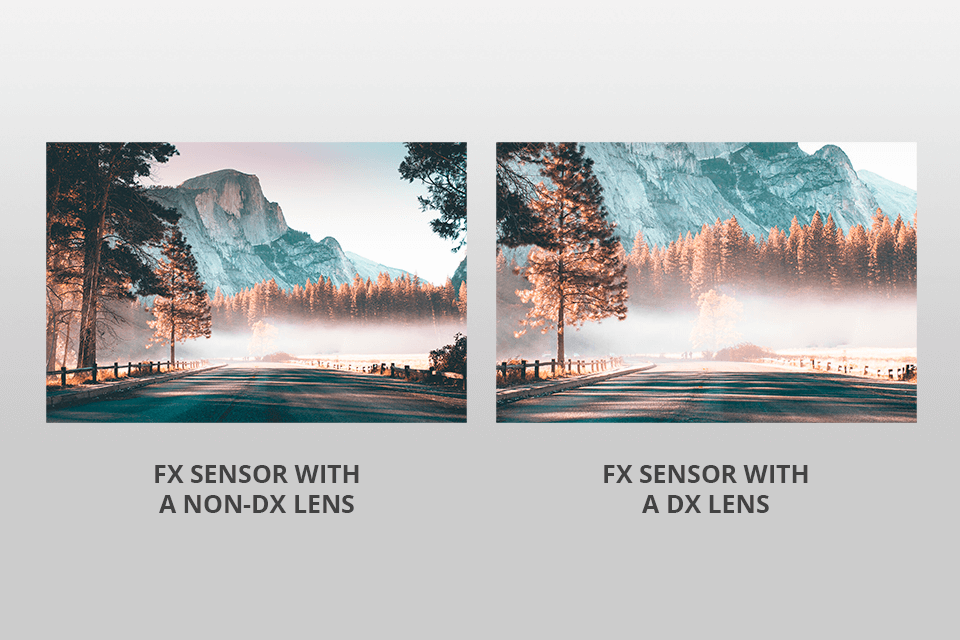
Thanks to such crop factor matching, you can pair your FX Nikon cameras with a broader range of lenses. So, a 24mm lens will have a 1.5 crop factor applied and will produce images that you can typically get with a 36mm full-frame equivalent. Thus, if you frequently work in scarce lighting conditions, you can opt for a 33mm FX format analog in order to get good images. Thanks to increased sensor size, the photos you get will contain clear details.
FX Nikon cameras can be roughly categorized into 2 groups based on the intended use. The first type offers a lot of resolution. The most prominent representative is Nikon D850. The second group includes cameras with improved sensitivity and speed, e.g., Nikon D5. Those professionally engaged in landscape and fashion photography typically search for cameras that can offer higher quality and produce images suitable for large-format printing. Wildlife and sports photographers are on the hunt for fast-action cameras such as Nikon D5. And for the best Nikon all-around lens for your camera, consider one that complements your specific photography style, whether it's capturing breathtaking landscapes or freezing fast-paced action.
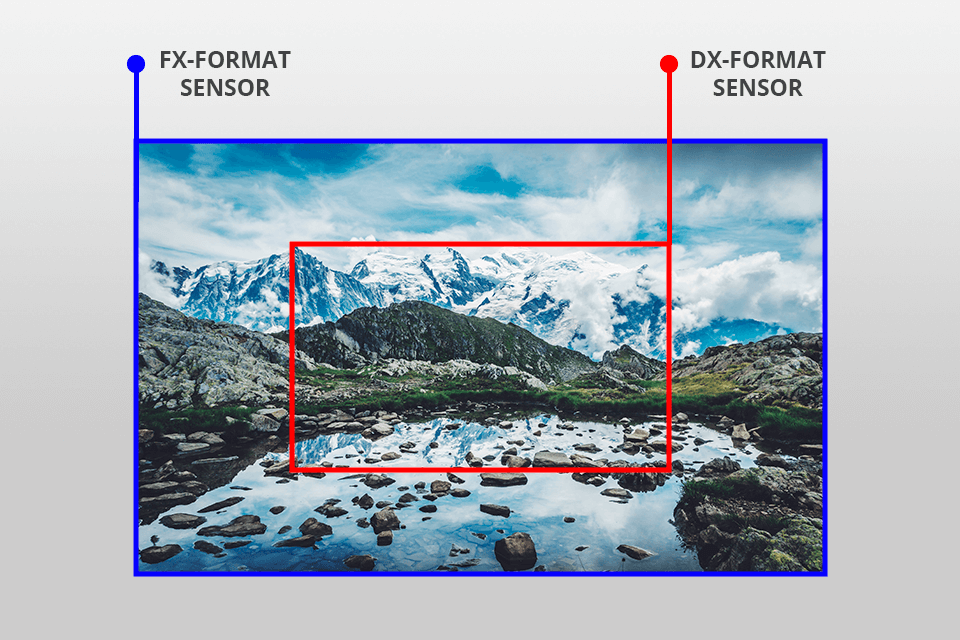
FX camera one-ups their DX rivals if we talk solely about technical characteristics. FX low light cameras have bigger sensors and grab less noise, so the image quality will be on point. Being mainly aimed at experts, such cameras have a sturdier construction which comes at a higher cost.
The Nikon FX vs DX lens comparison causes lots of debate. However, it is proven that FX models surpass their rivals in terms of quality. Since they are equipped with a larger viewfinder, they are capable of collecting more minute details. However, pixels become larger. Such advantages raise the price tag perceptibly, which may be a serious issue for photographers with a limited budget. Of course, you can choose a DX smaller-sized alternative but you’ll have to put up with its less dynamic nature.
The size of a sensor plays an important role and FX is several steps ahead of a DF equivalent in this regard. It offers a broader dynamic range and captures less noise.
Yes. However, when you use DX lenses in a crop mode on an FX camera, the FFOV is identical to the one that you get on a DX camera but the resolution is lower since you are using just a piece of a sensor. If this isn’t a problem for you, go ahead. Or, you can use DX lenses as FX lenses, tolerating vignetting in the corners.
Absolutely. DX cameras are versatile and can produce excellent results in various photography genres. They are often preferred by photographers who need a lightweight and compact setup without compromising on image quality.
The crop factor is the ratio of the DX sensor size to a full-frame sensor. It's typically around 1.5x for Nikon DX cameras. This affects your field of view, making lenses appear as though they have a longer focal length. It can be advantageous for telephoto shots but limiting for wide-angle photography.
All Nikon lenses rolled out for DX crop format cameras have a “DX” abbreviation in the name of a lens. If you don’t see these letters, it means a lens is of the FX (Full Frame) type.
Yes. FX and DX lenses can be used interchangeably. Thus, shifting from an FX camera to a DX DSLR, you don’t need to purchase new lenses.
If you have a DX camera and attach a DX or FX lens to it, you receive a narrower view than when putting an FX lens on an FX camera with the same focal length. So, either you are using an FX or DX lens, 50mm equals 50mm.